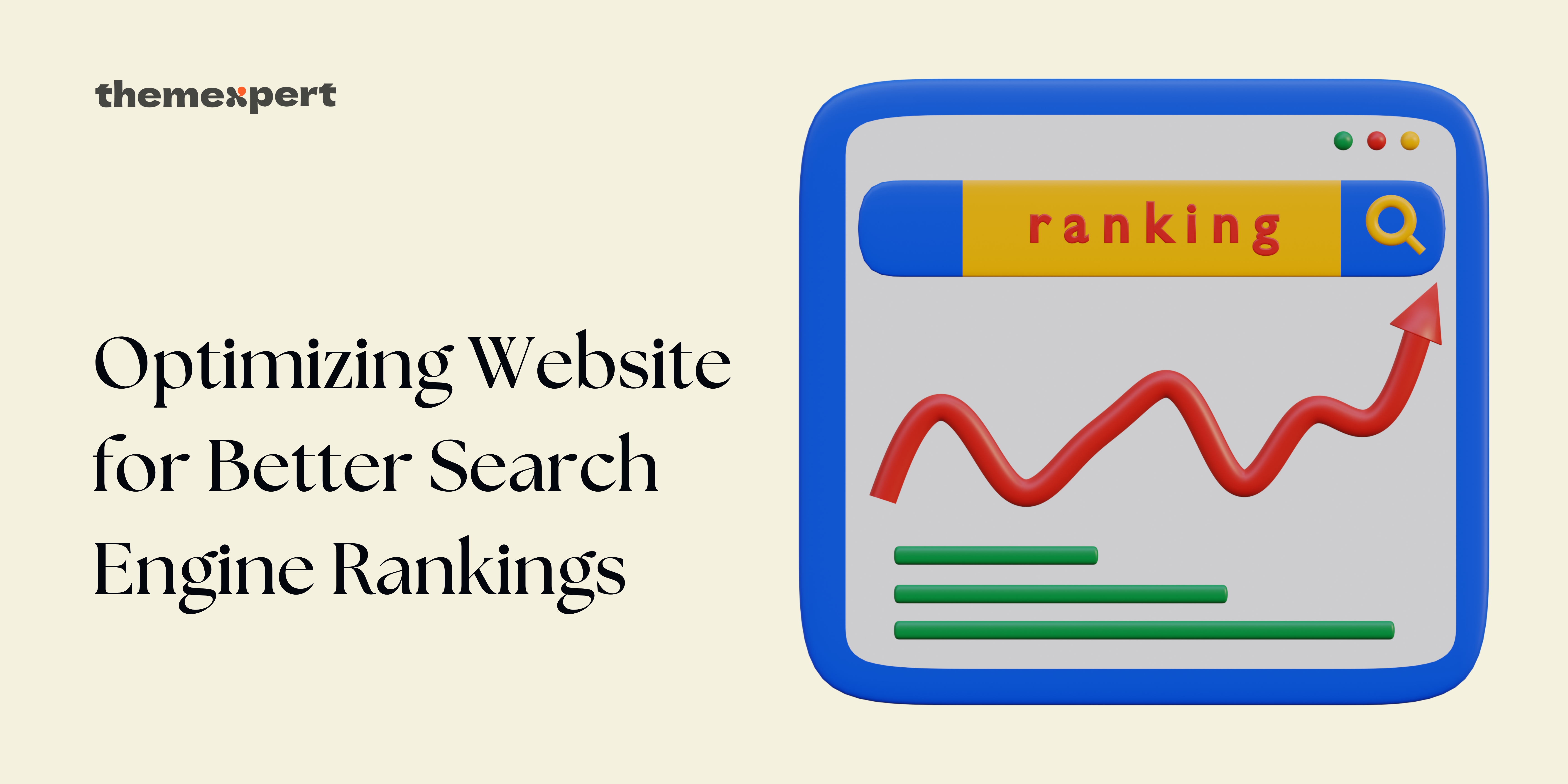The digital space is a goldmine of opportunities for marketers and business owners, what with the continuously increasing number of consumers opting to search for products, services, and information online. As per one research, Google alone garners around 99,000 searches every second, which sums up to 8.5 billion searches daily. This data presents a major opportunity for businesses to connect and engage with their prospective customers.
Now, here’s the challenge: getting your website and brand visible on the search engine results pages (SERPs). Taking into account the 200 million active websites vying for customer attention, the quest for that prime spot has become tougher than ever. This is where website optimization can be of great assistance.
What is website optimization?
Like any digital strategy, website optimization refers to the process of improving different elements of a website to enhance its visibility, traffic, and conversions. The end goal? Create a seamless user experience and rank higher on SERPs, which all lead to more visitors taking desired actions.
How to optimize your website for higher search engine rankings
Finding your website on the first page of search results is far from being a simple stroll in the park. It requires meticulous analysis, planning, and execution. And, sure, SEO and marketing services can be your best solution in this matter. However, understanding the components of website optimization is equally crucial. You got to equip yourself, first and foremost.

Below, let’s explore the core strategies and best practices to rank higher in SERPs and convert more of that booming search traffic into sales.
1. Perform comprehensive keyword research
Have you ever tried to search for something online and wondered why certain websites appear at the top of the results? Well, it’s not just luck; it’s often the result of using keywords in a strategic way.
If your pages directly match and satisfy user intent for specific queries, search engines reward you with higher rankings. And behind that exceptional visibility lies an essential element: thorough keyword research. It’s the foundation for vital online discovery and growth.
You can start by brainstorming a list of terms and phrases your target audience might use when searching for products or services like yours. It’s also a good idea to focus on more precise long-tail keywords, as they’re more specific and targeted to different user intents. They go deeper than just saturated words, increasing the chances of engaging those actively seeking what you offer.
You can use tools like Ahrefs or Google Keyword Planner to uncover many relevant keyword opportunities with decent search data.
It’s also essential to note that there are factors you must consider, such as:
- Search volume
- Keyword competitiveness
- Keyword difficulty
- Keyword value
This technique doesn’t have to be complicated, but it does require time and effort to do the analysis properly.
2. Produce unique and engaging content
Nothing beats the impact of unique and high-quality content when it comes to engaging audiences and improving search engine rankings. But creating well-crafted content consistently takes more than just catchy headlines and fancy formatting.

Here’s a quick guide on how to catch a search engine’s attention.
- Be the answering machine: Dive deep into your audience’s pain points. What keeps them up at night? What challenges do they face? Craft content that directly addresses these issues, providing valuable insights, actionable solutions, and fresh perspectives. With this, you can hook the audience’s interest.
- Embrace authenticity: Ditch the generic fluff and let your unique voice shine through. Your passion, expertise, and even quirks can resonate deeply with readers. Inject personality into your writing, share genuine stories, and let your authenticity guide your content creation.
- Go beyond text: While written content reigns supreme, diversify your offerings. Explore compelling blog posts, infographics, captivating videos, and interactive quizzes. Experiment with different formats to cater to various learning styles and preferences. Keep in mind that variety is the spice of content life!
- Infuse statistics: Studies or statistics are pleasing and fascinating to search engine’s eyes. Weaving relevant, accurate data into your content can be a powerful signal of expertise and trustworthiness, boosting your website’s ranking in search results.
Follow these tips, and you’ll go beyond simply “writing” content. No doubt, content is king, but quality is its golden crown.
3. Develop a responsive web design
Smartphones are practically extensions of everyone’s life. In a 2023 report from Statista, a staggering 58.33% of website traffic came from mobile devices. This trend underscores the necessity for websites to consider a responsive web design. Not only does it attract prospects, but it also significantly improves website rankings. That’s because search engines prioritize mobile-friendly websites, considering them a key factor in determining visibility and ranking.
4. Improve website speed
The facts don’t lie—faster websites have higher conversion rates and better rankings. In fact, almost 50% of Internet users expect a webpage to load in two seconds or less before they abandon it. Achieving this speed can put your site in the top 20% of fastest loading time websites.
Consider the following techniques to improve your webpage loading speed:
- Compress, resize, and optimize images to reduce file size.
- Set cache expiration times through headers to allow browsers to store assets locally.
- Minify CSS, JavaScript, and HTML files by removing unnecessary spaces, lines, etc.
- Leverage a content delivery network (CDN).
- Compress resources sent from the server so browsers spend less time downloading them.
- Streamline and simplify code and assets for faster processing and reduced bandwidth usage.
Fast page speeds lead to a smooth visitor experience and are likely rewarded by search engine algorithms.
5. Build high-quality backlinks
It’s long been known that backlinks remain one of the most important ranking signals for SEO. A backlink profile acts as a vote of confidence from the online community, directly telling search engines your website is worth finding and ranking.
However, the landscape of backlinks has shifted. Gone are the days of mass link building and shady link farms. These tactics affect not only your site but also your brand and reputation. Instead, you need to earn quality links naturally by:
- Contributing guest posts to reputable websites in your industry
- Building relationships with influencers in your niche
- Engaging in discussions on forums and online communities related to your niche
- Sharing your content on social media platforms to increase visibility
- Listing your business on local directories and review sites
- Implementing a solid internal linking strategy within your website
- Providing testimonials for products or services you genuinely endorse
Quality backlinks can be your loyal companion if done right. They come through because they genuinely value what you offer.
6. Fix technical errors
Search engines like Google care about user experience, and technical errors can break this factor. They’re glitches or bugs that hinder your website’s functionality, performance, or accessibility.
Here are a few ways to fix these errors:
- Check broken links: These links are pathways that lead nowhere. They could be internal, pointing to non-existent pages within your website, or external, directing users to defunct websites or outdated content. You can use tools to scan for broken links and update them with working URLs or redirect them to relevant pages. It’s also best to set up 301 redirects to guide users to the correct page or create informative 404 pages that help users navigate.
- Address duplicate content: Duplicate content can confuse search engines and affect rankings. Use canonical tags to indicate the preferred version of a page or consolidate duplicate content into unique pages.
- Monitor server health: Choose a reliable hosting provider and address server errors promptly.
- Secure your website: You may have noticed a lock icon next to the website address in your browser’s address bar. This signifies that the website is using hypertext transfer protocol secure (HTTPS) to protect data transmission between your browser and the website’s server. That means the user’s activity is encrypted, which can give your website a significant SEO boost, higher visibility, and potentially more organic traffic.
Having a free-flowing and technically sound website is essential for optimal user experience and search engine performance.
7. Optimize site architecture
Site structure refers to how a website’s pages and content are organized and interconnected to form its overall information architecture. It consists of:
- Content categorization
- Information hierarchy
- Navigation schema
- Contextual linkages
If one or two of these elements fall out of alignment, it creates problems for both users and search engines. For example, if the categorization system groups pages randomly without a cogent organizing principle, people will struggle to find related content. On the other hand, search bots get confused about informing related pages if hierarchy layers lead to link paths that don’t logically connect topics.
That’s why site structure optimization should be on your list. Here’s what you can do:
- Visualize your website’s structure, ensuring a logical flow from broad categories to specific subtopics.
- Organize content in a way that aligns with how users typically search for information.
- Employ straightforward labels and logical groupings to guide users effortlessly.
- Implement breadcrumbs to show the hierarchical path of a page.
- Implementing a solid internal linking strategy within your website
- Submit XML sitemaps to search engines through Google Search Console.
- Implement structured data (schema.org) to provide additional context to search engines. Rich snippets generated from structured data can improve click-through rates.
- Conduct regular site audits and update the structure as needed to accommodate new content and changes in business focus.
In essence, optimized site architecture helps search engine crawlers efficiently traverse, index, and understand your website.
Elevate your website ranking through optimization
Positioning your brand on the first page of search results can be a win-or-lose battle, depending on the strength of your optimization efforts. But fear not; armed with the tips outlined in this article, you’ll soon witness your brand rise to the pinnacle of online visibility.

